Bean-to-bar, small batch, craft, artisan, micro-batch chocolate; whatever you call it, each one boils down to the same idea of a new way of making chocolate.
Although some terms are older than others, all of them refer to a small-scale chocolate making movement. It began in earnest in the 1990's and gained momentum around 2005-2007, and now counts itself as having as many thousands of small chocolate makers all around the world.
Do you know your local bean to bar chocolate maker?
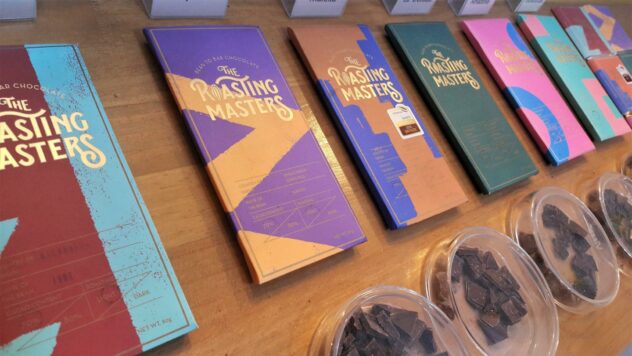
Jump To
The Craft Of Chocolate
Chocolate as we taste it starts as a seed that someone took the time to plant and then care for, just as someone created and cared for you. And just like you wouldn't want someone to only see one still image from your life, you shouldn't limit your chocolate experience to the bar in front of you.
Each chocolate bar you taste is just a snapshot of the life of those cacao nibs and the many seeds used to make that batch of chocolate. Even that same chocolate will taste different a year later, if you can let it sit that long.
Craft chocolate makers understand and manipulate this fact, cultivating the different personalities of each batch of cacao they make into chocolate. Making bean to bar chocolate has been compared to making beer or wine, especially in regards to vintages for each cocoa bean.
The old type, or the old model for chocolate making, is considered to be that of the "Big Five" Chocolate makers: Mars, Nestle, Hershey's, Kraft/Mondelez, and Cadbury (now owned by Kraft/Mondelez). The term "Big Chocolate" has two functions. For one, it refers to their ubiquity around the world.
They're producers of a large percentage of the world's industrial chocolate, and provide most people's first experience with chocolate. But it also refers to them forming an industry mindset, one which controls a majority of cocoa sales.
In real-world terms that means they have a monopoly on purchasing the cocoa grown in some parts of the world, notably West Africa. On top of that, they often control the conditions in which it is grown & harvested & processed.
So what is bean to bar chocolate exactly, and how has it proven itself to be different?
Craft Chocolate: Bars With a Heart
Answering the question "What is craft chocolate?" is not as simple as describing a thing. There is a multi-faceted industry and community behind craft chocolate, and in order to understand it, you need to see the whole picture.
Allow me to paint it for you.
What Is Craft Chocolate?
Craft chocolate is chocolate made from raw cacao beans sourced transparently and made into chocolate on a small scale, with a strong emphasis on the inherent flavor of the beans. It is the result of a marked shift from westernized and over-processed "chocolate" to a global cacao product, made from material grown all around the world.
The phrase "bean to bar" is often used in reference to the fact that craft chocolate makers control the origins of their products form the unroasted cacao bean to the finished chocolate bar. Single plantation or single origin chocolate bars are just one of the staples of The Movement.
They're used to showcase both the nuances in flavor of each region's beans and the skills of a craft chocolate maker. In my opinion, a great chocolate makers cajoles an evolution of flavor notes from their beans, combining scent & taste & texture to create unique flavors.

When Did Craft Chocolate Start?
A shift in consumerism towards businesses with more transparent practices and fair traded ingredients started in the 1980's. This eventually led to the formation of several equal trade and environmentally-friendly certification companies.
However, it's generally accepted that the craft chocolate movement began in earnest around 2005. This was around the time at which Scharffen Berger Chocolate Maker was sold (it's now owned by Hershey's) and Taza Chocolate was formed.
The aforementioned Taza joined with four other companies (Askinosie, Patric, Amano, and DeVries) in 2008 to form the now-defunct association of Craft Chocolate Makers of America. Much of what these companies were initially making was bean to bar dark chocolate made with only cacao & sugar, though their repertoires quickly expanded.
By 2010, there were dozens of such small-scale producers just in the US. Around 2015 there was another noticeable bump, and since then, hundreds of tiny chocolate producers have popped up worldwide.
This third wave includes some makers who craft chocolate from their own cacao, often called tree-to-bar chocolate makers. This exponential increase has caused a huge shift in availability of microbatch chocolate-making equipment, bumping the numbers up even higher.
Who Makes Craft Chocolate?
All different kinds of people have started making bean to bar chocolate, most of whom stumbled into chocolate making from a whole other career path, such as lawyer, ethnobotanist, or auto mechanic. Some also started their careers as chocolate makers or inherited a family business.
This has resulted in a very culturally disparate but decidedly united group of chocoholics, such as myself, finding common ground in cacao grown around the world. Often, the website The Chocolate Life (now hosted on The Maven) is used as a meeting ground and a forum for all things chocolate.
Check out their site to learn a lot more about the nuances of the craft chocolate movement, from debates over dark chocolate vs. dark milk chocolate to the merits of various tempering machines. Recently there's also been major growth in the value-added sector of craft chocolate.
This means that people are making chocolate in the same country in which the cacao they use is grown (but not necessarily in the same part of the country as the cacao is grown). In countries outside of North America and Europe, as well, chocolate making has rapidly grown in popularity, notably in Ecuador, Peru, Japan.
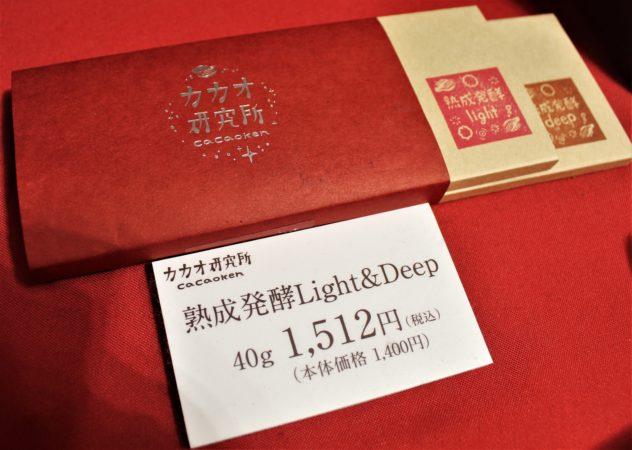
Where Can You Buy Craft Chocolate?
The new center for craft chocolate production is the US, not Europe. This is despite the fact that European craft-style chocolate has a longer history, centered in France and Italy. The overall impact of craft chocolate can be seen globally, however, as cocoa production is being taken up in all corners of the world.
Cocoa farmers everywhere are starting to receive more competitive prices based on quality and the unique flavors of their cacao, with criollo-dominant varietals generally fetching the highest prices.
Check out my craft chocolate buying guide here.
Even though over half of the world's cacao is grown in West Africa, most of the fine flavored cacao is grown in Latin America. The Dominican Republic is currently the world's largest exporter of organic cacao, and most Caribbean islands have cacao production.
Cocoa is even grown as far south as Bolivia, and throughout Brazil. But the Asian market is growing the most rapidly, with traditionally industrial cacao farms in South Asia being re-planted with more fine flavor varietals of cacao.
Why Eat Craft Chocolate?
"You don't get rich as a chocolate maker unless you're exploiting someone else along the way."
There are simply too many people involved in the dozens of stages of the chocolate making process. So for most makers, it comes down to a desire to make a positive ecological and economic impact upon the far reaches of our earth, alongside a need to publicly realize their long-time love affair with often dark chocolate and flavor exploration.
This combination has resulted in a huge leap in bars bearing some kind of quality certification. Including some kind of connection to the farmers who harvested your beans has become a de facto prerequisite to being considered an artisan maker.
But it was the inundation of equality- and ecologically-driven certifications that finally lead Taza Chocolate's founder Alex Whitmore to found Direct Trade certification. Not costing anything to the farmer, unlike other certifications, direct trade indicates simply that the maker bought the cacao straight from the farmer at a price both parties found to be fair.

How is Chocolate Made?
Basically, cacao is a tropical fruit grown within 25 degrees of the equator. Cacao producers harvest the fruits themselves— known as cocoa pods or mazorcas de cacao— only when ripe, taking care not to harm the cacao tree.
Each pod is quickly broken open and put aside to ferment. Once the beans are fully fermented, they're set out to dry in the sun, eventually being shipped to a chocolate maker (after being passed through an undetermined number of hands).
These cocoa beans arrive in the chocolate factory to be cleaned & sorted, roasted & peeled, and then ground into a paste called cocoa mass, also known as cocoa liquor or chocolate liquor. The cocoa mass is then usually sweetened with sugar and often smoothed out with milk powder & soy lecithin, and then refines for another 1-3 days.
At this point, many makers in the fine chocolate industry would add unique inclusions such as tea or bacon and then temper their chocolates. Some also press that cacao liquor for cocoa butter, and then make white chocolate from it, while some even go so far as to make bonbons and truffles.
To read more in-depth about how chocolate is made, check out my page here.
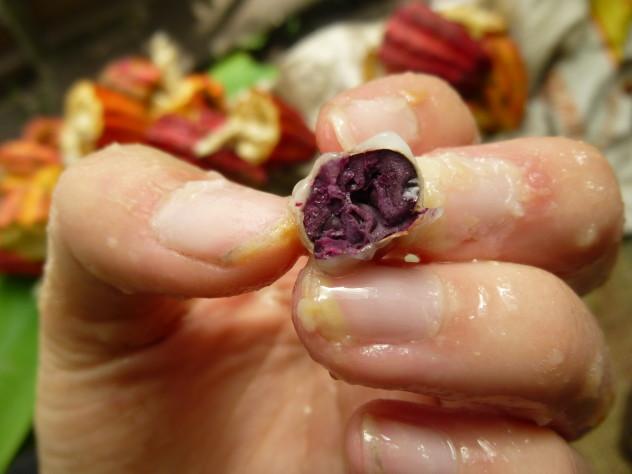
There are Different Types of Cacao?
Oh yes!
There had until recently been three types of cacao into which all cacao varietals were sorted. But science has made it clear that it's not so black and white, and the division between varietals has multiplied. Over the last few years, cacao scientists have been able to further differentiate cacao varietals into ten distinct genetic families.
Each of these has lots of variation in flavor, thanks to evolution based on climate, sunshine, altitude, rainfall, soil nutrients, and many other factors. Here's an overview of the three still-common cacao types.
Forastero
It was brought to West Africa in the late 1800's, and to South Asia in the 1980's, from its native growing region in modern-day Brazil. Currently it comprises the vast majority of the world's cocoa crop. It's also the main type cultivated in West Africa, where over two-thirds of the world's cocoa is produced.
Generally it is referred to as the "hardy" variety of cocoa, withstanding most viruses and bearing the most fruit of the three types. But it also tends to have a very straight-forward cocoa taste with very few flavor notes, making it less desirable for craft chocolate.
Of the three, it fetches the lowest market price. As such, it's the variety of choice for the creation of cocoa-flavored products and cocoa butter (the fat removed from cacao beans, also called "cacao butter").
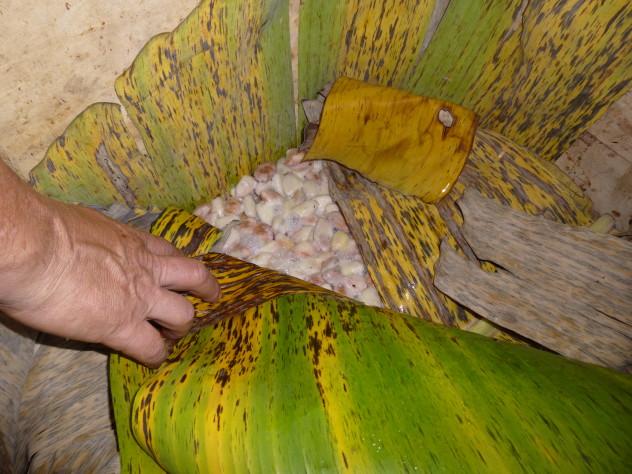
Trinitario
A hybrid of the forastero & criollo types, this middle-of-the-road variety originates on the island of Trinidad. It was created after forastero trees were introduced to a criollo plantation after a plague devastated the crop. Nowadays there is trinitario cacao growing all over the world.
It comprises about 10% of the world's cacao production, as well as the bulk of the fine-flavor cacao market. The criollo qualities of trinitario pods can be expressed in the form of white cacao beans, sometimes as few as 5% of the beans, or one to two in each pod.
Criollo
The most varying in flavor and aroma, criollo is believed to be native to current-day Venezuela. But, it was later raised in pre-Columbian Guatemala and Mexico, leading to much confusion regarding its origin.
It's cultivated mostly on small estates in Latin America, almost exclusively for consumption in artisan chocolate bars, and comprises 1-2% of the world's cacao production. The most expensive of the three types, criollo trees are being planted more often these days.
Sometimes they're even taking the place of older forastero trees in an attempt to gain more money from each harvest. Incentive for this comes because, despite bearing fewer fruit on average than their counterparts, criollo can fetch upwards of 5x market price per metric ton, if identified and treated properly post-harvest.
This massive price spike is largely due to their differing nuanced flavors and inherent lack of bitterness.
Other
There are currently ten types of cacao genetically mapped. Some of those have traditionally been under the umbrella of either criollo, trinitario or forastero.
Cacao Nacional, a cacao varietal native to Ecuador was believed to be forastero, but is now classified as its own genetically distinct family of cacao, while Ecuador may very well be the native land of Theobroma cacao, after all.
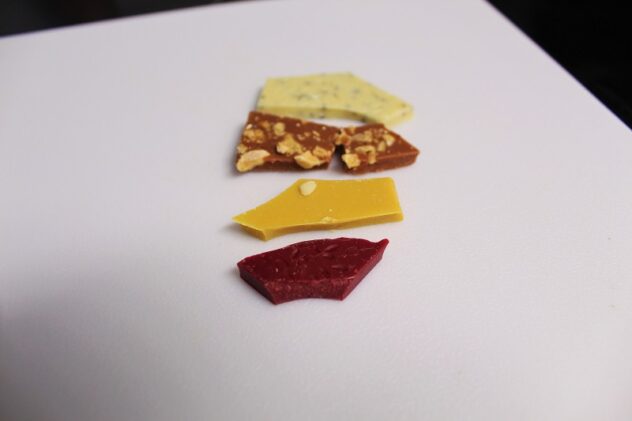
So is it Cacao or Cocoa?
Well, according to Escazu Chocolate's co-founder Hallot Parson (who has since left the company), that depends on what language you speak. Or more aptly, it depends on the language spoken by the chocolate maker who is talking about the ingredient.
"Cacao" is both the scientific name for the species of fruit from which chocolate is made, as well as being the Spanish and French word. In English the plant is called "cocoa." I used to think that the distinction lay in whether the fruit was in its raw state or its processed one. But Hallot's explanation makes more sense than any other one I've encountered.
As a chocolate aficionado and an avid traveler whose interests are largely in Latin America, my preferred term is cacao (evidenced forever in the name of my site). This word, however, tends to throw people off, as it has different connotations in different contexts.
It also means absolutely nothing to people who grew up with the word "cocoa," though the craft chocolate movement is changing that. So some people react to the word by saying "Ca-what? What did you say?"
While others hear the word and think of the fruit of their childhood or long days working on a plantation; still others recall fudge-scented rooms full or roasting cacao or their first bite of artisan chocolate.
None of these is correct and none are wrong, because that's part of what cacao is— a unique experience and a global phenomenon with roots both everywhere and nowhere specific. To read more about this debate, check out this article.
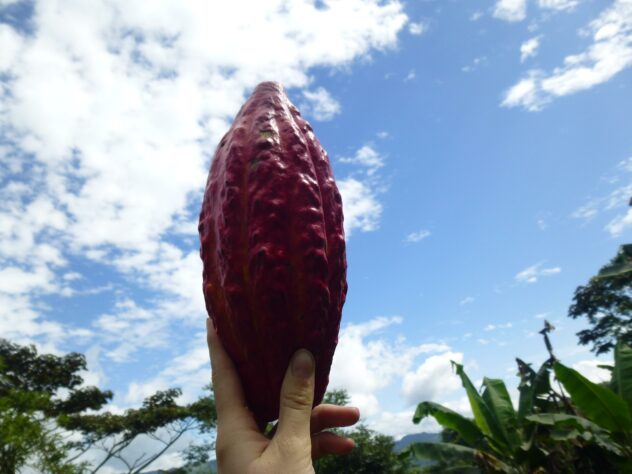
FAQ About Bean to Bar Chocolate
The concepts hold the same spirit, but while 'bean to bar' describes the level of control that a maker purports to have over their sourcing, 'craft chocolate' has come to represent an ethically-focused niche industry committed to making delicious chocolate with fairly-traded cacao.













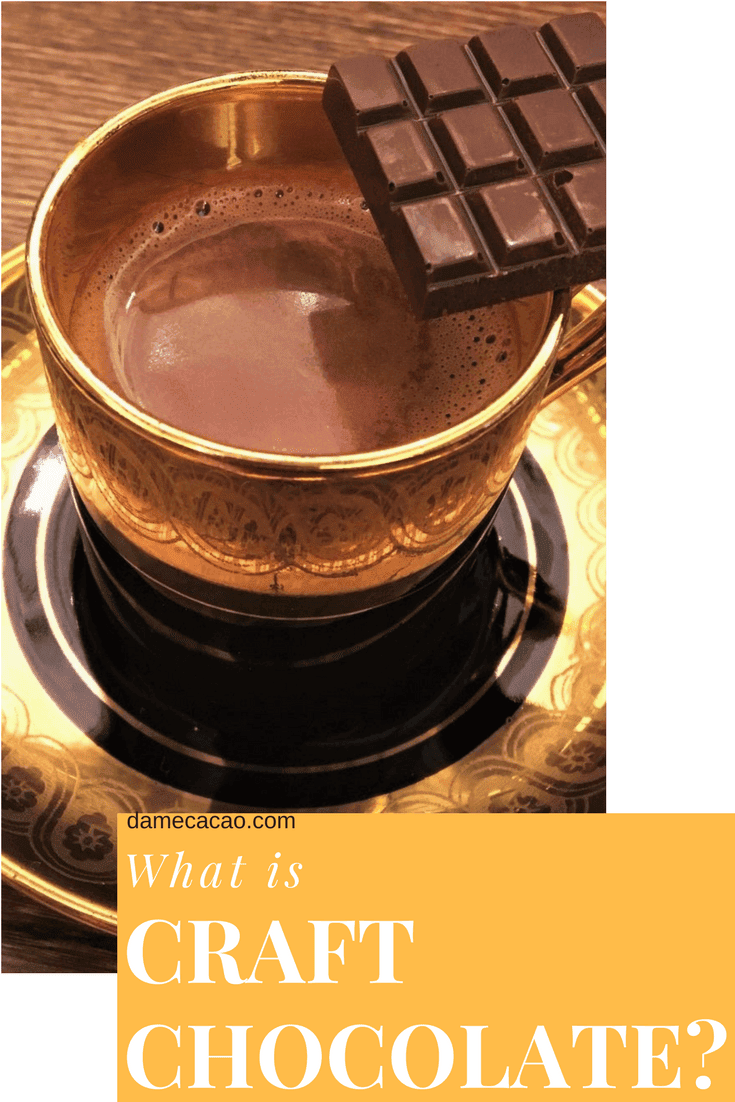
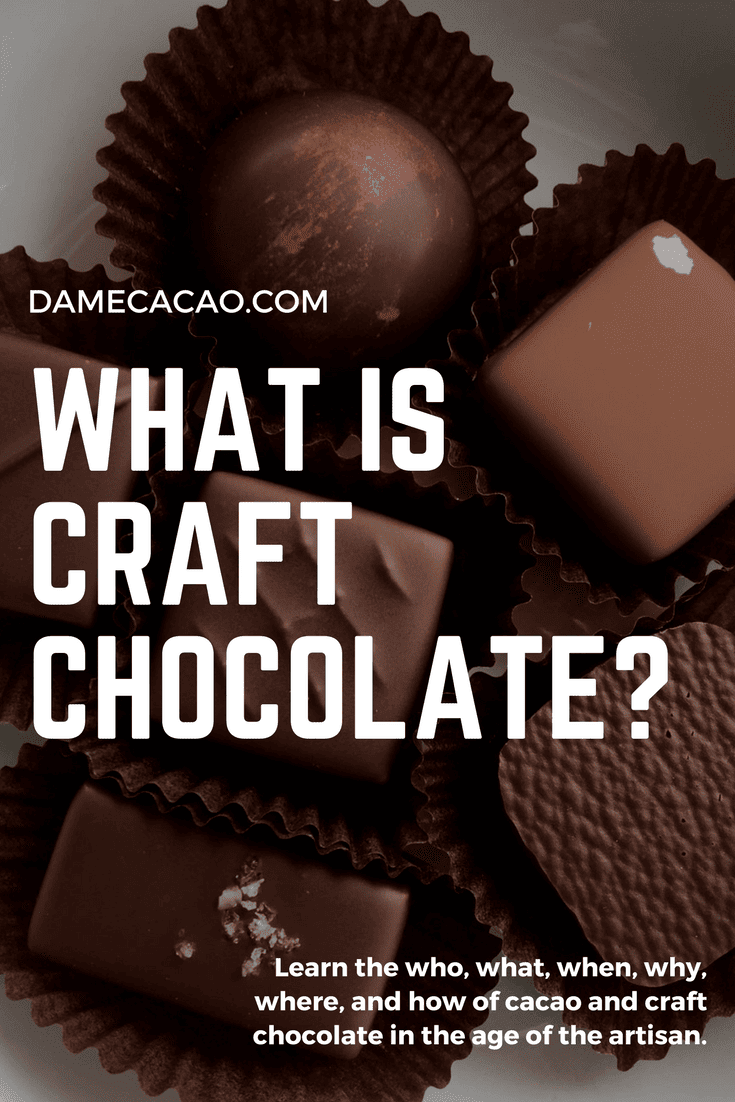




Wynette Harewood
I am as small coaco farmer in Trindad & Tobago in the Caribbean. starting on the bean to bar or tree to bar chocolate journey. You article a good read. Any suggestions for tempering in a tropical climate ...do I need to have an AC room with a temperature 23 C.
Max
Thank you, Wynette! I'm glad to be of service. As for tempering in the tropics, you need to consider both temperature and humidity. A small room works perfectly well for tempering, but yes, it needs to be below 23C or maaaaybe 24C, and you need a dehumidifer, or else your chocolate will be more sluggish and may bloom more easily. I wish you lots of luck, as the Caribbean is a tough place to work with chocolate!
Luca Finnley
Good post about Cacao. All your information about this very useful for cacao lovers. Cacao actually a healthy ingredient for us, everyone must consume ii. The best way of consuming Cacao is Chocolates.
Max
Thanks for your comment, Luca!
Josefina Josue
I am from the Philippines, we have around 50 trees of cacao bearing fruits, at present I am doing manually the processing of cacao beans into powder. I am interested to explore the possibility of making chocolate from our organic cacao beans. Please make suggestions where I have to start. Thanks.
Max
Congratulations on your trees! You should start by just doing. Grind your beans directly into a paste and then add sugar, and see what flavors you taste. If there's anything off, work on improving the processing of your beans first. Bad beans will never make good chocolate. Good luck, Josefina!